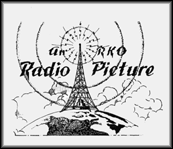But this actually is a clue, of sorts. The pamphlet goes on to state:
By far, the most important museum of antiquity was the great institution at Alexandria founded by Ptolemy Philadelphius in the third century before Christ (an endeavor supported by a grant from the Treasury). And no treatment of the museum would be complete without mention of Noah's Ark in which we find the most complete Museum of Natural History the world has ever seen.Beginning to understand?
I learned all of the above from an irresistibly brief work of nonfiction called Mr. Wilson's Cabinet of Wonder (1995), an account of author Lawrence Weschler's discovery of and investigation into the MJT. Weschler, a former staff writer for The New Yorker, concludes that the MJT is intended as both an oblique historiography of museums and a satire of the techniques scholars use to create the appearance of authority, although the straight-faced Wilson isn't letting on. (Is his proprietorship a daily piece of performance art?) In any case, many of the astounding items on display are verifiably genuine, but even these may be misleadingly or preposterously labeled, and so the mind slips.
Museums as the institutions we know today originated from the European Wunderkammern of the 16th and 17th centuries: Private collections of curiosities of all description that defied pre-Enlightenment disciplinary classification — works of strange art by God and man — mainly from the New World. Weschler contends that the predominant response of parochial Europe to the avalanche of discovery initiated by Columbus was wonder, the cognitive startle reflex when one tilts on the hinge between seeing and understanding. That experience contains something vital.
* Example. Alongside an array of sundry antlers and horns is a display containing a solitary hairy protrusion captioned as follows, sic:
"We were shown an extraordinarily curious horn which had grown on the back of a woman's head. . . . It is somewhat of a curiosity [for] it appears that men-folk bear their horns in front and such women theirs behind. It was noted on a label that it originated from a Mary Davis of Saughall in Cheshire an aet 71 an. Dn. 1688. No doubt it will have been mentioned in the Transactiones Angl., or in the Hist. nat. of Cheshire. The horn was blackish in color, not very thick or hard, but well-proportioned."
— Testimony of an early visitor to the Musaeum Tradescantianum, The Ark. Bird, 132, vol. 4, 337. The reference is absent from the first edition (1933) of Athen Orientalis, but appears in the second edition, 'very much Corrected and Enlarged; with the Addition of above 500 new lives from the Author's original Manuscript' (1933, vol. 2, col. 888) . . . although Bird's testimony would seem to be of very dubious value.

No comments:
Post a Comment